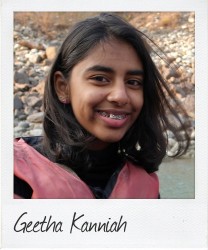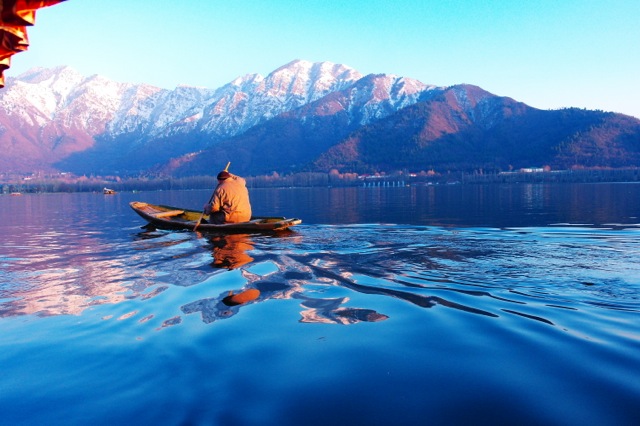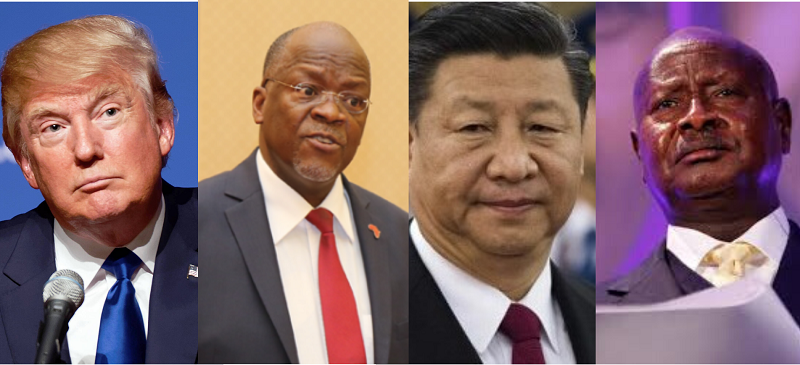“Although there is rivalry and fear, Kashmir still remains pure.”
May 28  Beneath the social unrest of Kashmir lies a paradise, writes Geetha Kanniah, 17, a Correspondent from Malaysia. She describes her visit to Kashmir and how the experience changed her view of the country.
Beneath the social unrest of Kashmir lies a paradise, writes Geetha Kanniah, 17, a Correspondent from Malaysia. She describes her visit to Kashmir and how the experience changed her view of the country.
“Kashmir is the boon of contention,” said Iqbal, my ski instructor, a local Kashmiri who learned English from tourists who once thronged the place, but now come in fewer numbers. I was puzzled by his statement. What did he mean?
This is the story of how I got to know the other side of this war-torn state of India.
Army barracks and military tents, soldiers armed with rifles, demonstrations by people shouting along the streets – these were the things that scared me as I entered Kashmir. But clean air, the cool breeze, the pure white snow, the friendly locals, the beautiful culture – these are the things I miss now that I’m back home in sunny Malaysia.
Kashmir, a land so rich in culture, is a frightening place to many people. My first impression of it was already biased as I cleared immigration with its eight spot checks. Although we were extremely excited to see snow-capped mountains and snow on the ground at the airport (which happens to be a military airbase), fear deep in our hearts grew on the way to the hotel when we passed a procession of people shouting out their religious beliefs in their native language. They thronged the streets and surrounded our car. We kept our mouths sealed, worried that a slip of tongue that would land us in trouble.
Over the next week, we became accustomed and gradually overcame our anxieties. Then it was all fun!
It was early February, with snow piled seven feet high. At every turn we saw mountains glazed with white snow. One could feel the biting chill in the bones. Kashmir is home to one of the highest skiing peaks and attracts many tourists, though it is neither as commercialized nor as expensive as some ski spots in Europe.
We hired a ski trainer and began lessons on the snowy slopes of Gulmarg. On these beautiful slopes, we also rode sledges in a blizzard, drank sweet aromatic khawwa (saffron infused tea) and chatted with the locals who were simply happy to make new acquaintances. We were surrounded by mountains: Pir Panjal, Karakoram and K2.
After a few days we descended to Srinagar – a valley enclosed by mountains and ending at a beautiful lake with a tiny piece of land, which was once Shah Jahan’s tea drinking spot under the Char Chinnar (four maple trees).The lake was calming and serene. It had the magic to grip a person, just as it probably did Shah Jahan. The water acted like a mirror as the blue sky reflected off its surface, perfect for people like me who love photography. The pictures magically convey the many colours of a rainbow. Then there is the river Jhelum that runs through the town. People use the river as their source of livelihood: giving boat rides on their shikaras, selling merchandise from the river boats, running houseboat hotelsand even collecting lotus roots to sell at the local market. Around the riverbank and lake, the poor locals sell peanuts and they taste good!
We enjoyed every second of our time, taking in as much as we could! We soon realized that Kashmir was not the place we thought it was. The more we looked around, the more we understood the conditions. The war and constant monitoring for terrorists has caused inconvenience, but the locals are willing to overlook that for the mere beauty of nature, religion and traditions. These are people who are proud of their culture and heritage.
Religion is strongly upheld in Kashmir but people with different beliefs stay side by side. In one day, I visited a mosque where a strand of hair from Prophet Muhammad is kept (and I bowed down in respect), and prayed at a Hindu temple founded by Sri Shankaracharya. Though Islam is a strong faith among the majority of Kashmiris, Hinduism is still given its due respect.
We made friends with the locals, joking and laughing beside them. You can expect wide smiles and hearty laughter from them. We spoke to them in English and in return, they spoke to us in a mix of Urdu, Kashmiri, English and body language. People from the older generation seemed to speak English well, maybe because of the influence of the British rule in their time.
We learnt about carpet weaving from the carpet weavers, had conversations over saffron tea with the chai wallahs (tea men), and traded places with the sledge pullers in order to experience the difficult lives they live. We shopped for exquisite carpets, embroidered clothes, dried apricots, nuts, snow garlic and saffron. We visited old forts, spoke to a friendly soldier armed with a loaded machine gun and were made to feel welcome by soldiers who camped at the temple.
We also spoke to the descendants of Rajputs, who described how their ancestors were converted from Hindus to Muslims during the reign of Shah Jahan, and their dislike of being in the midst of two rival countries.
Thanks to Facebook, I now keep in touch with the waiter, ski instructor, hotel staff, rugged van driver, and owner of a quaint and exclusive carpet shop who seemed to have led a magical aristocratic life in the 1960s.
Kashmir, a hard place to stay in, yet an alluring place to live in.
“Kashmir is the boon of contention”, said Iqbal. Now I understand what he meant. Although there is rivalry and fear, Kashmir remains true to its generations-old beliefs, and is not influenced by foreign cultures.
People may be scared away, as was I before I arrived at this spectacular place, but to those who are brave enough to venture near, Kashmir is pure, magnificent and breathtaking.
Kashmir is and always will be a paradise on Earth.
…………………………………………………………………………………………………………………
About me:
I am a Malaysian who looks for adventure and thrill, and is passionate about sports. I enjoy tennis, swimming, badminton and most recently, longboarding. I also spend a lot of my time with my camera, capturing as much as I can, while documenting them on my blog: journeywithacamera.wordpress.com.
My travels give me the exposure to learn about the world. And to know and do more, I volunteer with different organizations, particularly in the marine field. My ambition is to be an explorer and to reach out to people.
…………………………………………………………………………………………………………………
Opinions expressed in this article are those of the author and do not necessarily represent the views of the Commonwealth Youth Programme. Articles are published in a spirit of dialogue, respect and understanding. If you disagree, why not submit a response?
To learn more about becoming a Commonwealth Correspondent please visit: http://www.yourcommonwealth.org/submit-articles/commonwealthcorrespondents/
…………………………………………………………………………………………………………………




